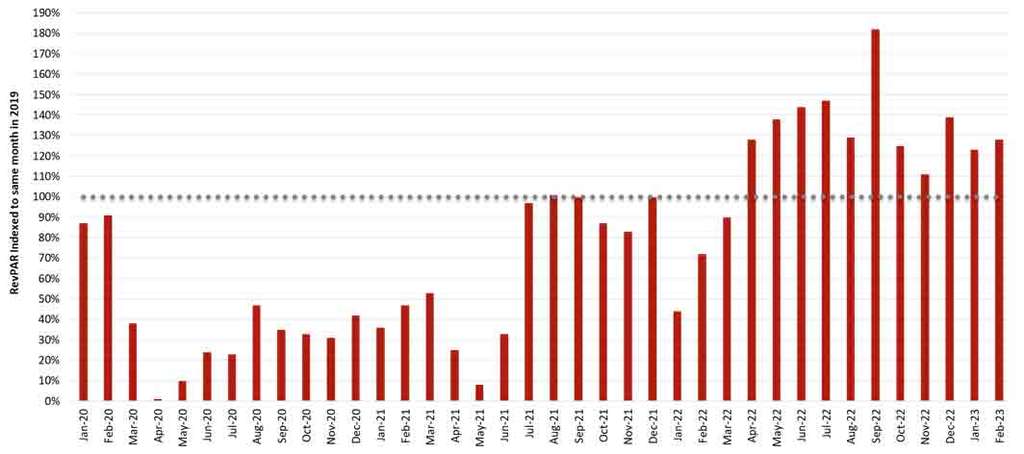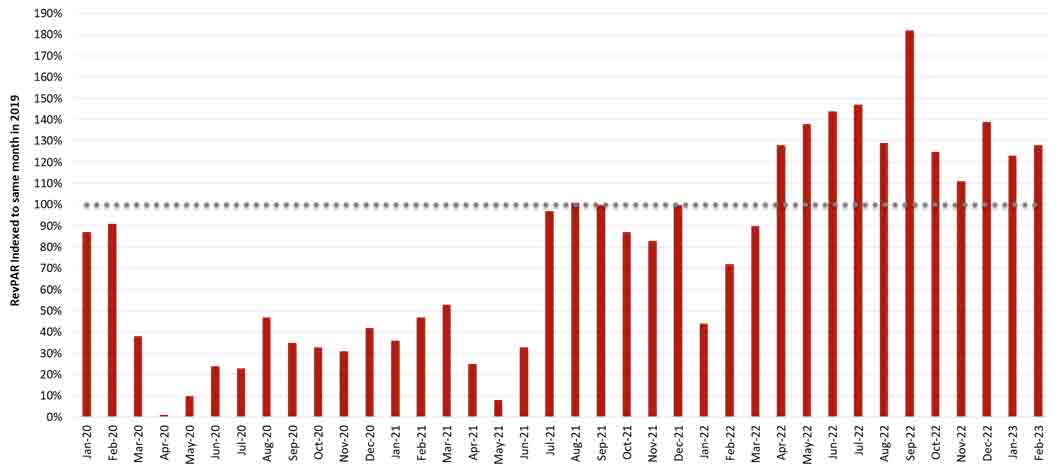Jaipur's Hospitality Sector in the Pink of Health
As one of UNESCO’s ‘City of Crafts and Folk Art,’ Jaipur has a rich culture and vibrant history. The city has a beautiful landscape full of forts, havelis, and palaces, which is further complemented by the oldest mountain range in India, the Aravalli Hills. Surrounded by popular tourist spots like Ajmer, Alwar, and Dausa, among others, Jaipur is a major hospitality hub in the country, popular with domestic and foreign travelers alike, and is often regarded as the pinnacle of Indian hospitality. Jaipur, in fact, earned its well-known moniker, the Pink City, when Maharaja Sawai Ram Singh II, painted the entire city pink in 1876 in preparation for the arrival of the Prince of Wales as a sign of hospitality.
Good infrastructure, including quality hotel supply, has been crucial in making Jaipur the tourist hub it is today.
Jaipur is an excellent example of how good infrastructure can help a tourist destination become more competitive. Although Jaipur's tourism is seasonal due to its harsh summers, being a part of the Golden Triangle with Delhi and Agra reduces its sensitivity to fluctuations in demand. The gap is further closed by a well-developed transport system, which has helped the city become the tourist hub it is today. The Jaipur international airport, which is just 13km away from the city center, serves as a gateway to even other tourist destinations in Rajasthan like Jodhpur, Jaisalmer, Udaipur, Kota, and Mount Abu. At its peak in FY19, the airport handled passenger traffic of 5.5 million, which is substantially higher than its capacity of 3.5 million passengers. The city is also well-connected through the rail network, but the city’s easy access by road has been the game changer for the city’s tourism sector. The 195-km Delhi-Jaipur Expressway has reduced the travel time by half and the recently opened Sohna-Dausa section is expected to reduce the travel time between Delhi & Jaipur to 3 hours.
The number of quality hotel room supply in Jaipur has increased from 2,500 keys in 2010 to over 11,000 keys at the end of 2022, with several upper-upscale and luxury hotels opening in the recent past. The good infrastructure, connectivity, and availability of superior quality hotels have also helped establish Jaipur as a major destination wedding and MICE (Meetings, Incentives, Conferences, and Exhibitions) location. The development of the Jaipur Exhibition & Convention Centre (JECC), the largest pillarless exhibition and convention center in South Asia, and the Birla Auditorium, one of the largest auditoriums in the country, has further helped the MICE and wedding segments.
Jaipur hotel market’s revival
The occupancy rate in Jaipur’s hotel market made a strong comeback after COVID with demand growing in double digits, while supply growth was muted at 1-3%, which resulted in the market occupancy rate of 60-62% by the end of 2022, just 6-8 percentage points shy of pre-pandemic levels. Meanwhile, average rates were 16-18% higher than pre-pandemic rates, which enabled RevPAR to increase by 5-7% from 2019 levels.
Month-on-month RevPAR recovery through the pandemic
The Jaipur hotel market is expected to witness renewed growth going forward, mainly fueled by the strong growth of the MICE segment, the resumption of inbound tourism, pro-tourism government policies, and the city’s hotel supply growing at a slower rate. Only 4,000+ keys are expected to enter the Jaipur market over the next five to six years. The majority of the luxury and upper upscale hotel supply in Jaipur is concentrated in North and Central Jaipur, but the opening of the new expressway is expected to change the landscape. This expressway, which connects to South Jaipur as the entry point, is likely to create a new growth area due to its proximity to the airport and enhanced road connectivity with other northern states. With a positive demand outlook thanks to ever-enhancing infrastructure and increased government support, we anticipate the south of Jaipur to be the biggest beneficiary in the coming years.

